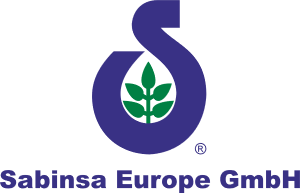Sabinsa Corporation has taken another step in defending the purity of the curcumin supply chain with the addition of a conclusive test to guarantee that the range of Curcumin C3 Complex® products are all of natural origin.
When Sabinsa became aware that Turmeric extracts adulterated with synthetic curcuminoids were infiltrating the US market, the company immediately alerted its customers and the industry. Continuing the company’s proactive leadership in addressing this problem, Sabinsa initiated radio carbon testing for all batches of Curcumin C3 Complex® safeguarding customer and consumer confidence in their product.
To distinguish synthetic curcumin from natural curcumin is not ordinarily possible through tests based on chromatography or spectral means. However, turmeric plants biosynthesize curcumin with carbon-dioxide from the atmosphere as the sole carbon source. This atmospheric carbon-dioxide contains extremely minuscular but accurately determinable quantities of radiocarbon (which is sometimes referred to as natural carbon). On the other hand, synthetic curcumin is made from fossil-fuel or petroleum-based materials in which radiocarbon is totally absent. Methods such as Accelerator Mass Spectrometry can accurately assess the content of radiocarbon in a sample and can readily distinguish between a natural sample and its synthetic version. It can even determine the extent or degree of synthetic contamination in an alleged natural product when the two are mixed, which Sabinsa has identified is happening extensively in the marketplace.
Academic labs such as Center for Applied Isotope Studies, University of Georgia have developed reliable methods. Now several commercial labs have also adopted them and an ASTM (American Society of the International Association for Testing and Materials) method now exists that can be readily applied to curcuminoids to determine natural authenticity.
"Curcumin based products are among the best-selling nutritive ingredients in the market today, which has given rise to highly feverish marketing and promotional activities,” said Shaheen Majeed, Sabinsa’s Marketing Director. “It also positions it a material ripe for economic adulteration, making it imperative that companies sourcing curcumin take steps to be sure to know exactly what they are getting, both for regulatory and brand integrity reasons.”
Curcumin is derived from the rhizome of Curcuma longa, a plant native to the Indian sub-continent and far-east. The health conferring effects of curcuminoids, cited in the ancient texts of Ayurveda, are now corroborated through numerous modern scientific and clinical investigations. The main ingredient curcumin and its relatives, demethoxycurcumin and bisdemethoxycurcumin, are also amenable to synthesis. Some companies knowingly or unwittingly market products containing synthetic curcumin, since synthetic curcumin is much cheaper to produce than plant-derived curcumin.
The US FDA’s position on synthetic versions of natural products is that they are not the same, and require a New Dietary Ingredient application to be legitimately sold as a nutritional ingredient.
"As industry eyes have turned to the global supply chain as the primary source of quality problems, Sabinsa continues to take action in instituting measures that deliver the safest, most efficacious ingredients possible,” Shaheen said. “From warning against “borrowed” science more than 20 years ago, to emphasizing the need for science to back up ingredient claims, and actively advocating IP protection, we continue to pursue the correct course for industry quality.”







